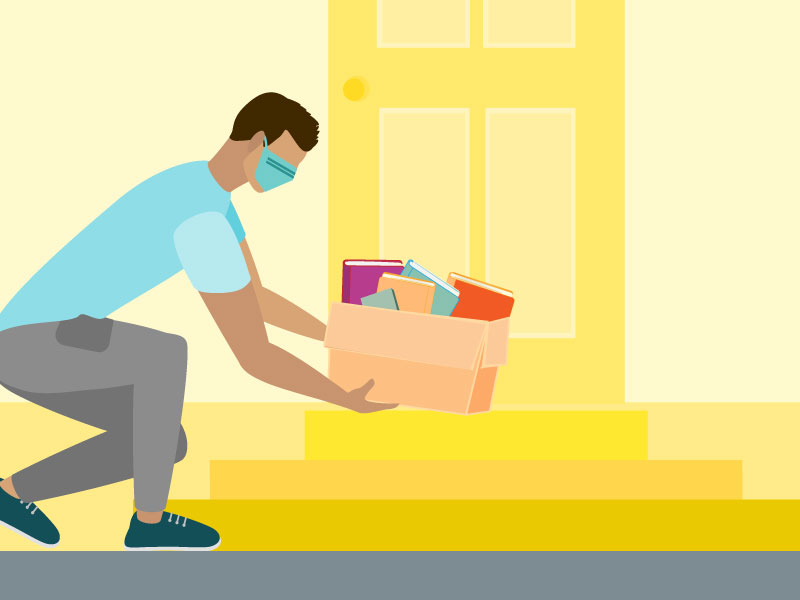For Kids Who Don’t Have Books at Home, Communities Are Working to Reach Them | Donalyn Miller
Book access inequities existed in our communities long before COVID-19. What can we learn now that will improve access for children and teens in the future?
 |
Getting Images |
Responding to our local network of families and educators, my family has been sorting, sanitizing, and mailing books and arranging no-contact book exchanges and drop-offs. Assembling donations, we have disgorged lots of bookcases and stacked books on every possible surface in our dining room and office, including the chairs and window ledges. Re-shelving the books we decide to keep has evolved (or devolved) into a full-scale examination of our entire collection. Unable to control much during these pandemic days, I aspire to at least tame our bookshelves.
We are overwhelmed and falling over books, but we cannot turn back. There is no way out but through.
As horrifying as this mess may sound, I’m a happy dragon sifting my hoard. The books on our shelves hold both the memory and promise of reading joy, and their presence comforts me. I dreamed of owning a house filled with books when I was a kid. I lived on my library card and treasured the few books I owned. My parents saved green stamps for encyclopedias and proudly displayed them in the living room. To us, full bookshelves represented prosperity and education. We must have come up in the world. Look at all of these books.
My family still values our library cards and uses them, but we also love our house full of books. We don’t take this privilege for granted and share with as many readers as we can. Every reader needs a few books of their own!
Book ownership matters when providing every child with continuous reading material and choices. Families with less discretionary income or few places to purchase affordable, interesting books often struggle to provide their children with books (Lindsay, 2010; Krashen, 2012). While libraries bridge this gap in many instances, we cannot overlook the powerful connection between book ownership, young people’s academic achievement, and their positive reading identity development. In a survey of more than 18,000 young people ages eight to 17, children with abundant book ownership not only achieved higher levels of education, but they showed higher reading engagement and interest, invested more time reading, and read more widely and in higher volume than their peers who owned fewer books (Clark & Poulton, 2011). It’s hard for many young people to identify as readers when all of the books they read belong to school.
When school and public libraries closed as a result of the COVID-19 pandemic, many children and teens lost access to books. With few books at home, some students don’t have adequate reading material to support their school assignments or their independent reading. As we work to increase students’ access through school and library initiatives to loan books, we must increase how many books young people own at home.
Book exchanges, laundromats
During the COVID-19 shutdown, many communities are implementing successful programs for loaning library books or increasing how many books their students own at home. By far the most common system among the librarians and teachers I talked with incorporates book exchanges with the school lunches offered to high-need families. When caregivers come to school for meal pickups, they can also take home books. Some school librarians encourage students to reserve library books through the school library website and pick them up during designated exchange times at school.
Several community groups have set up free book baskets outside their schools or local laundromats. Coordinating with local independent bookstores and community organizations, some school districts have set up accounts for families to order a few books for their children and receive them by mail. Communicating with students and families via email or phone, many educators are driving around school neighborhoods, picking up and delivering books to their students through no-contact book exchanges. In communities with Little Free Libraries, educators and families report increased use.
Many local book donation programs have moved their summer reading book distribution events to online platforms that will mail self-selected books to children’s homes. First Book, the nonprofit organization dedicated to eradicating book deserts, has organized a network of requests from educators who need funding and book donations to support their students.
Book access inequities existed in our communities long before COVID-19. What can we learn now that will improve access for children and teens in the future? How can communities improve and sustain effective book exchange and donation programs, so they serve young readers long term? What do families tell us they need to support their children’s reading lives at home?
In the months ahead, students’ book access needs will continue. Ensuring equitable access to online resources will help. Loaning books over the summer months and helping students acquire public library cards will help. Increasing how many print books young readers own at home empowers them most, encouraging kids to believe, “I must be a reader. I have my own books.”

RELATED
The job outlook in 2030: Librarians will be in demand
The job outlook in 2030: Librarians will be in demand
ALREADY A SUBSCRIBER? LOG IN
We are currently offering this content for free. Sign up now to activate your personal profile, where you can save articles for future viewing





Add Comment :-
Comment Policy:
Comment should not be empty !!!